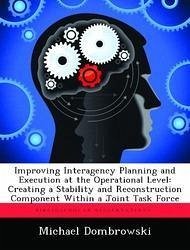Nicht lieferbar

Operational Design and ISR and Zombies: Or How Operational Design Can Help to Re-Aggregate Joint ISR at the Theater and Component Levels
Versandkostenfrei!
Nicht lieferbar
Intelligence, Surveillance, and Reconnaissance (ISR) suffers from disaggregation. Disaggregation can cause a lack of coherence and focus in the overall ISR strategy because the challenges of managing a disparate conglomeration of assets and processes can be overwhelming. Operational design, the framework that underpins a joint operations plan, can help to re-aggregate ISR. In doing so, it can aid ISR strategy formulation in five distinct ways. It ties ISR strategy closely to the Combatant Commander's (CCDR's) operational plan, provides focus for all-source intelligence collection, provides a m...
Intelligence, Surveillance, and Reconnaissance (ISR) suffers from disaggregation. Disaggregation can cause a lack of coherence and focus in the overall ISR strategy because the challenges of managing a disparate conglomeration of assets and processes can be overwhelming. Operational design, the framework that underpins a joint operations plan, can help to re-aggregate ISR. In doing so, it can aid ISR strategy formulation in five distinct ways. It ties ISR strategy closely to the Combatant Commander's (CCDR's) operational plan, provides focus for all-source intelligence collection, provides a means to communicate more coherent ISR tasking, aids in decentralized execution and mission-type orders (MTO), and helps to determine cost-benefit analysis. This paper argues that operational design concepts can help to focus and re-aggregate ISR strategy at the combatant command level during the joint operations planning process (JOPP) as well as at the component level.





